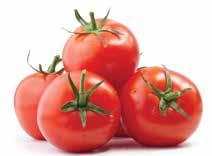YOUR INDUSTRY
NITROGEN EFFICIENCY INCREASED Words by Glenys Christian
Balle Brothers agronomist, Graham Bunckenburg, with a crop of Agria potatoes at Puni, outside Pukekohe
Pukekohe-based vegetable growers, Balle Brothers, knew they were performing quite well when it came to reducing nitrogen applications, but the soon to be completed Fluxmeter Network project showed how even more gains could be made.
“We don’t use it extensively but it’s there if we want it,” he says.
“It was confirmation that we were on the right track,” says company agronomist, Graham Bunckenburg, who focuses on its potato crops.
“We’ve probably achieved the easy gains.”
“All our thinking has been about using nitrogen more efficiently.” In their case that’s meant a move to reduce the base dressing to around 50% of the total going on, then apply up to three side dressings. “The last ones might not go on if they’re not needed,” he says. This has led to reducing nitrogen leaching from the soils potatoes are grown in to from 25 to 30 kilograms a hectare, with the impetus firmly there to reduce that even further. “We knew that with our main crop potatoes we were coming from a good base, but there are challenges.” “That’s where your agronomist skills come in.” He finds using nitrate Quick Test (QT) strips a good backup tool to fine tune the rate and timing of side dressings. 34
NZGROWER : MARCH 2021
“The trick is to get the minimum amount on in those side dressings.” A gradual improvement in nitrogen leaching levels has also been seen in soils where the company grows onions. “Wasted fertiliser is wasted money,” Graham says.
All our thinking has been about using nitrogen more efficiently But with seed quality, soil preparation, soil moisture levels and pest and disease threats all contributing to the final crop yield there’s a lot in the mix. An attack of potato blight, for example, can mean nitrogen is lost which would otherwise have gone into the growing crop. Balle Brothers is also acutely aware of the risk that bare land presents when it comes to leaching rates so has moved to growing a range of catch crops such as mustard, legumes or ryegrass to mitigate that. But there’s always the ever-present threat of a big rainfall event right between when potatoes or onions are harvested and the catch crop grows enough to hold nutrients in the soil.



























